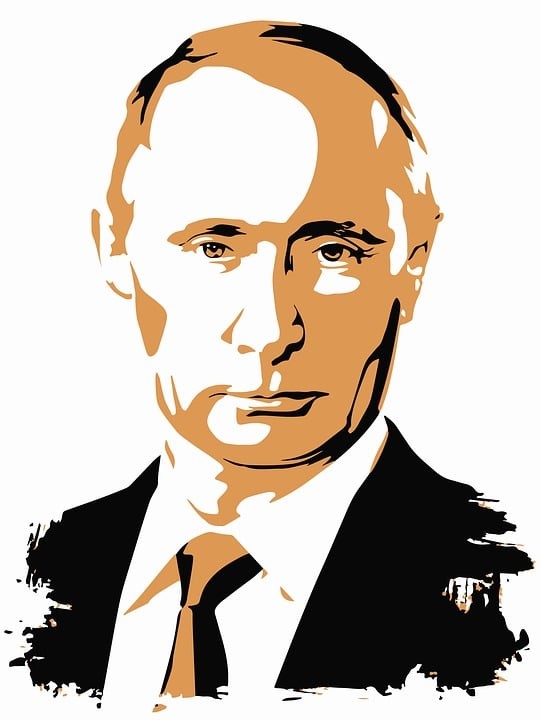Many Russian leaders firmly believe that Western capitalist nations are intent on seeing Russia deconstructed to resemble a small principality than a strong nation-state run more closely by its authoritarian leader Vladimir Putin.
“Russian Security Council Secretary Nikolai Patrushev’s recent tirade against the West, as well as his insistence that Western governments are the tools of major capitalist groups and that the West wants to reduce Russia to the size of 15th-century Muscovy has attracted enormous attention as an indication of prevailing attitudes in the Kremlin and possible plans for even greater self-isolation and more aggression against Russia’s neighbors,” says Paul Goble of the Jamestown Foundation.
In Patrushev’s Argumenty i fakty interview earlier this week he became the first senior Russian leader in decades to openly refer to the ethnically Ukrainian population living in the Russian Far East. It is a relatively unknown population problem Putin previously considered resolved. It may indicate that Russia is newly concerned about their allegiance to Russia. Patrushev, according to Goble, noted that “in the southern parts of the Far East, given the large share of those who resettled there already during the times of [tsarist prime minister Pyotr] Stolypin, a significant number of residents consider the culture of the Ukrainian people to be their native one.”
Ukrainians view these communities as key outposts of Ukrainian civilization. Goble says they often are referred as “wedges,” with the one in the Far East between Vladivostok, Vostok and Khabarovsk being the “green” wedge and others such as those along the Russian-Kazakhstani border and in the Kuban being the “blue” and “crimson” wedges. In recent decades Moscow has employed harsh measures to suppress these communities. Yet it is only in the last eight years that more has emerged in the Russian media about the plight of these groups. The publication Russian7.ru recently reported that “in the post-Soviet period, the number of Ukrainians in the Siberian population has significantly contracted in all regions,” especially in the north but also in the Far East more generally. Since 1989, the deaths, departures, and assimilation of Ukrainians accounts for the two-thirds decrease in the ethnic population in the Chita Oblast. Russia7.ru says that only about half as many in Irkutsk, Buryatia, Sakha, Krasnoyarsk Krai and Kemerovo Oblast. Goble points out that in acknowledging that the number of ethnic Russians across the Far East has fallen by more than 50 percent, “Russian outlets unintentionally call attention to the critical role ethnic Ukrainians have played east of the Urals in the past and the ways in which they continue to play a role to this day.”
Goble cites three developments over the past several years have given the Kremlin new cause for concern regarding the Ukrainian “wedges” inside its current borders. He argues that many Moscow writers saw the resistance to the central government in Khabarovsk as a reflection of the Ukrainian background of the population in that Far Eastern republic. The Ukrainian government, he adds, has also increasingly called attention to these Ukrainian areas. Kyiv has enraged political leaders in Moscow who have long claimed the right to intervene on behalf of ethnic Russians while refusing to accept when anyone else does the same regarding other ethnicities in Russia.
Historically Russia is sensitive to past incursions on both its east and western borders. Over a century ago in its Far Eastern region it was attacks by Japan along with some Western countries. More recently Moscow claims some Ukrainian officials are discussing the potential of a “re-Ukrainization” of the region. Analysts suggest that this sets off alarms for Putin when anyone mentions these “green wedges.”
Ukrainian writers, adds Goble, have begun to talk about other “wedges” inside the Russian Federation, too. Analysts suggest that Moscow may be concerned about domestic threats elsewhere in Russia from Ukrainian-related populations. The two wedges that have attracted the most attention, first in Ukraine and then in Moscow, are the Kuban and the Ukrainian communities along the Russian-Kazakhstani border, Goble says. Many in Ukraine want Kuban back as it once was Ukrainian. The second community one hundred years ago also had a large Ukrainian population.
Today, Putin views that group as fomenting anti-Russian attitudes as far away as Kazakhstan. It has the potential to halt any future plans Russia has for reabsorbing Kazakhstan back into the Russian Federation. The war in Ukraine has many complications with far reaching consequences. Ukrainian diaspora are only one concern of the Kremlin’s today. It may turn out that Putin’s special military operation turns into a long war that spreads across more national borders as the small fires appear to be reigniting and are difficult to extinguish although in some cases a hundred years has passed.
Daria Novak served in the U.S. State Dept.
Illustration: Pixabay
